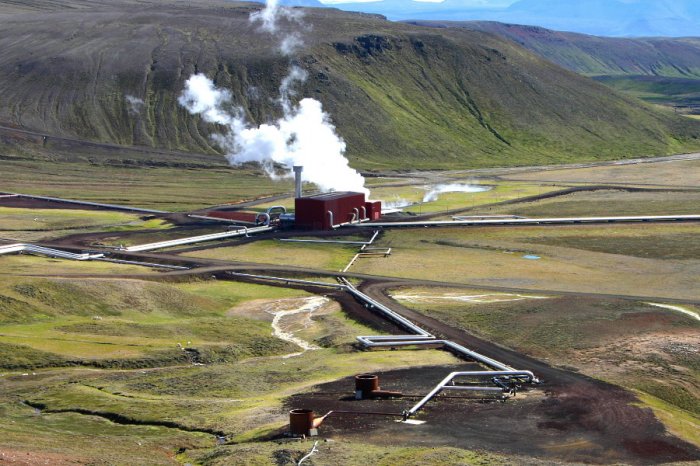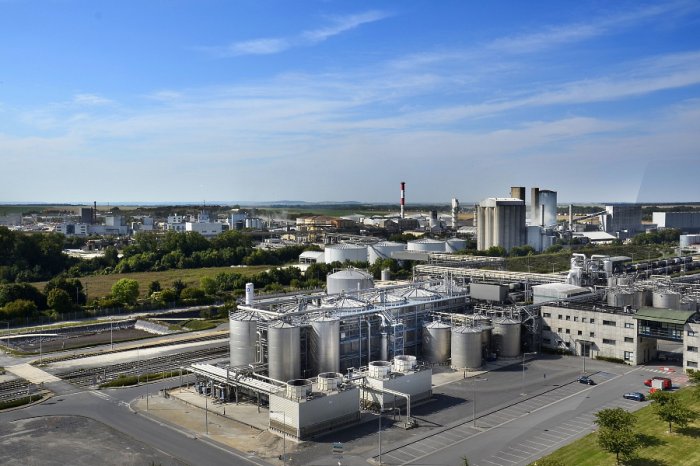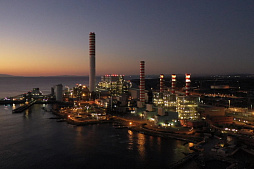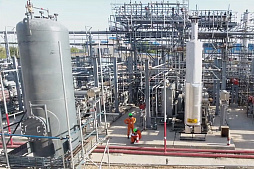After receiving the necessary documents (application form and project presentation), our team will try to review your request as soon as possible, and leading experts will offer the best options for project funding.
In this article, we provide an overview of renowned investment attraction models for a large business customers seeking long-term financial solutions for projects in various industries.
Below is a short list of models commonly used for attracting investments in industrial projects:
1. Triple Helix model. Emphasizes collaboration between academia, industry, and government to drive innovation and economic growth.
2. Open innovation model. Encourages the incorporation of external ideas, technologies, and partnerships to increase investment opportunities.
3. Business incubation model. Supports startups with resources, mentorship, and services to accelerate growth and enhance investment attractiveness.
4. Cluster development model. Focuses on creating regional innovation clusters to attract investments and foster collaboration among businesses, researchers, and governments.
5. Public-Private Partnerships (PPPs). Involves collaboration between public and private sectors to finance and manage infrastructure and industrial projects.
6. Value chain integration model. Emphasizes the optimization and collaboration of various stages within the value chain to enhance efficiency and reduce costs.
7. Innovation ecosystem model. Cultivates an environment that supports startups, investors, research institutions, and other stakeholders to drive innovation and attract investments.
Each of these models offers a unique approach to attracting investments and fueling the growth of industrial projects. The choice of model will depend on the specific goals, resources, and context of the project, host country and the industry it operates in.
If you are looking for long-term financing for your project or need professional financial engineering services, please contact the ESFC Investment Group team at any time.
Triple Helix and Quadruple Helix investment models
The so-called Triple Helix model, introduced by H. Etzkowitz and L. Leydesdorff, presents a collaborative framework involving academia, industry, and government.This model for attracting large investments emphasizes the synergistic relationships among the aforementioned entities to foster innovation, economic growth, and capital attraction.
The main components of the Triple Helix model include the following:
1. University-industry collaboration. Encouraging partnerships between universities and industries leads to knowledge transfer, technology commercialization, and joint research initiatives that attract investments.
2. Government support. Policymakers play a pivotal role by providing funding, incentives, and regulatory frameworks that support innovation and attract private investments.
3. Innovation ecosystems. The model promotes the creation of innovation clusters, science parks, and incubators, which facilitate networking and create new investment opportunities.
The Quadruple Helix model was later proposed as an extension of the Triple Helix model. In the Quadruple Helix model, a fourth element, often referred to as the "civil society" or "the public," is introduced as a key player in the innovation ecosystem. This model suggests that the inclusion and active participation of citizens, communities, and non-governmental organizations can significantly contribute to innovation, economic growth, and sustainable development.
Key characteristic features and interactions within the Triple Helix model include:
• Co-evolution. Three sectors co-evolve and influence each other. For example, universities adapt their research based on industry needs, and governments might shape policies based on current technological advancements.
• Triple Helix innovation. Innovation occurs at the intersection of these three sectors. Collaborative efforts may lead to the development of new technologies, products, and services that benefit society and drive further economic growth.
• Knowledge transfer. Universities transfer their knowledge through education, research publications, and technology transfer to industry. Industry, in turn, contributes resources, practical applications, and real-world challenges that inform academic research.
• Networks and partnerships. Collaborative networks and partnerships between academia, industry, and government are essential for creating an environment conducive to innovation. These networks facilitate information exchange, joint projects, and resource-sharing.
• Policy influence. Governments shape the innovation ecosystem by providing funding for research, creating incentives for partnerships, and regulating intellectual property rights.
The Triple Helix model has been applied in various contexts, including regional development, technology commercialization, and fostering innovation ecosystems.
While the original model focuses on academia, industry, and government, extensions like the Quadruple Helix model have added another layer by incorporating civil society or the public as a fourth component to highlight societal engagement and responsibility in the innovation process.
The Quadruple Helix model posits several benefits listed below:
• Citizen-centric approach. Involving the public and civil society ensures that innovations address real societal needs and concerns, leading to more relevant and impactful solutions.
• Transdisciplinary collaboration. The model encourages cross-sector collaboration and diverse perspectives, fostering holistic approaches to complex challenges.
• Social innovation. Civil organizations often focus on social and environmental issues. This leads to innovations that create positive social change alongside economic growth.
• Sustainability and inclusivity. By incorporating civil society, the modified model promotes environmentally and socially sustainable development, taking into account the well-being of diverse groups within society.
The Quadruple Helix model has gained popularity as Western societies emphasize the importance of responsible innovation, sustainability, and inclusive development. It recognizes that successful innovation ecosystems should not only be driven by economic interests but should also consider the broader social and environmental implications of technological advancements.
Nevertheless, the Quadruple Helix model is a conceptual framework, and its implementation can vary depending on regional contexts, policy priorities, and the engagement of each component.
Open innovation model in attracting investments
Developed by Henry Chesbrough, a professor and researcher in the field of innovation management, the so-called open innovation model promotes the approach that companies should share and use external ideas to advance their internal innovation efforts.This is a flexible strategic approach to innovation that emphasizes the importance of looking beyond a company's internal resources and capabilities to include external sources of innovation.
Key principles and characteristics of the open innovation model include the following:
1. External ideas integration. In the open innovation model, companies actively seek and embrace ideas, technologies, and knowledge from external sources such as customers, suppliers, partners, startups, research institutions, and even competitors.
2. Inbound and outbound innovation. Open innovation encompasses both inbound and outbound processes. Inbound innovation involves bringing external ideas and technologies into the company for further development, while outbound innovation involves sharing internal ideas with external partners for co-development or licensing.
3. Technology licensing and collaboration. Open innovation encourages companies to license their technologies to others, allowing them to access new markets and generate additional cash flows. Collaborative partnerships with external entities, such as joint ventures or research collaborations, are also key components of this model.
4. Reduced risk and costs. By leveraging external expertise, companies can share the costs and risks associated with research and development. This approach can be particularly beneficial for startups and smaller companies with limited resources.
5. Flexibility and adaptability. The open innovation model recognizes that not all the best ideas or solutions come from within a single organization. It encourages companies to be flexible, adaptive, and willing to pivot based on external insights.
6. Open platforms. Many companies use online platforms for their investment projects to crowdsource ideas, engage with external innovators, and facilitate collaboration. These platforms can accelerate the innovation process by tapping into a broader pool of expertise.
7. Intellectual property management. Companies need to carefully manage intellectual property rights when engaging in Open Innovation. This involves determining how to protect proprietary information while still benefiting from collaborative efforts.
8. Cultural shift. Adopting open innovation often requires a cultural shift within an organization, as it challenges the notion that all valuable ideas must originate internally. Companies must be open to external input and willing to collaborate with diverse partners.
The open innovation model challenges the traditional closed innovation paradigm, where companies primarily rely on their own research and development efforts to generate ideas and technologies.
Benefits of using this model for attracting investments in industrial projects include:
• Increased innovation potential. By tapping into external sources of innovation, companies can access a wider range of ideas and expertise, leading to breakthrough innovations.
• Faster way to market. Collaborating with external partners can accelerate the development and commercialization of new products, services and technologies.
• Cost savings. Sharing the costs of research and development with external partners can reduce the financial burden on individual companies.
• Access to new markets. Licensing and partnerships can provide companies with access to new markets, customers, and distribution channels.
• Risk mitigation. Collaborating with multiple partners spreads the risk associated with innovation and increases the likelihood of success.
Many experts agree, that the open innovation model promotes a more inclusive and collaborative approach to innovation, encouraging companies to look beyond their own boundaries to accelerate growth and development. This is especially useful for industrial projects that require huge financial resources and cutting-edge knowledge.
Business incubation model for industrial projects
The business incubation model is a structured approach that supports the growth and development of startup companies, typically during their early stages. Business incubators nurture early-stage startups by providing resources, mentorship, and networking opportunities.The main components of the business incubation model model are listed below:
1. Physical infrastructure. Incubators often provide office spaces, laboratories, workshops, and other facilities that offer startups a cost-effective way to access essential resources.
2. Business services. Incubators often offer various support services, including legal advice, accounting, marketing, business planning, financial modelling services and access to market research. These services help startups navigate complex business processes.
3. Mentorship and expertise. Experienced mentors and industry experts are often available to guide businesses in various aspects of development, technology, and market strategies.
4. Networking opportunities. Incubators foster a collaborative environment by bringing together startups, mentors, private investors, and other stakeholders. Networking events, workshops, and seminars facilitate knowledge exchange and potential partnerships.
5. Access to funding. Incubators often provide access to angel investors, venture funds, and other sources of funding. They can help startups refine their investment pitches and connect with potential investors from various niches.
6. Validation and prototyping. Industrial startups can access resources for building prototypes, conducting tests, and validating their products or technologies.
7. Market entry. Incubators assist startups in refining their market strategies, identifying target customers, and creating go-to-market plans.
8. Supportive community. Being part of an incubator community offers emotional support, mutual trust, and a sense of belonging, which can be vital during the startup phase.
9. Graduation. Successful industrial startups "graduate" from the incubation program once they achieve a certain level of growth and stability. At this point, they are better positioned to attract external investments.

Business incubators provide a range of resources, services, and mentorship to help risky startups overcome challenges, accelerate their growth, and increase their chances of success. This model is particularly valuable for attracting investments to industrial projects by offering a supportive environment for innovation, validation, and networking.
For capital-intensive industrial projects seeking investments, this model offers:
• Investor appeal. Startups affiliated with reputable incubators often gain credibility, making them more attractive to large private investors and investment funds.
• De-risking. The resources and mentorship provided by incubators help startups de-risk their projects, making them more appealing to investors looking for reduced uncertainties.
• Validation. Startups can use the resources within incubators to validate their technologies and business models, providing evidence of feasibility to potential investors.
• Acceleration. The structured support from incubators accelerates the growth and development of startups, making them “investment-ready” in a shorter period.
• Access to networks. Incubators provide startups with access to industry networks, potential partners, and investors, expanding their investment opportunities.
• Focused strategy. Incubators help startups refine their business plans, strategies, and value propositions, making their investment cases more compelling.
• Cost savings. Shared resources and services offered by incubators reduce operational costs, allowing startups to allocate more resources to business development.
However, the success of the business incubation model directly depends on the quality of the incubator, its resources, mentors, and the compatibility of startups with the program. Choosing the right incubator that aligns with the specific needs and goals of the industrial project is crucial for maximizing the benefits and attracting long-term investments.
Value chain integration model
The value chain integration model is another strategic approach that emphasizes collaboration and coordination across the entire value chain of a product or service, from suppliers to end customers. By optimizing and integrating various stages of the value chain, companies can enhance efficiency, reduce costs, improve product quality, and attract investments for industrial projects.The main components of the value chain integration model in the context of industrial projects:
1. Supplier integration. Collaboration with suppliers is essential for securing high-quality inputs. Integration at this stage can lead to optimized procurement processes and reduced supply chain risks.
2. Manufacturing integration. Streamlining manufacturing processes and ensuring smooth coordination between different production stages can lead to cost savings, improved product quality, and faster time to market.
3. Distribution integration. Efficient distribution and logistics networks enable products to reach customers quickly and cost-effectively, enhancing market reach.
4. Customer integration. Gathering customer feedback and insights helps companies tailor their products and services to meet customer needs more successfully.
The concept of the value chain was introduced by Michael Porter in his book "Competitive Advantage: Creating and Sustaining Superior Performance" (1985). While the term wasn't new, Porter's work provided a comprehensive framework that analyzed how businesses create value through a series of interconnected activities.
Over the time, the value chain model became a cornerstone of modern strategic management and has been widely used to analyze business operations and identify opportunities for optimization and differentiation.
Some important benefits of the value chain integration model include the following:
• Cost reduction. According to a study by McKinsey & Company, companies that effectively integrate their value chains can achieve cost reductions of up to 10% or more.
• Quality improvement. Integration allows for tighter control over production processes and materials, leading to improved product quality (for example, Toyota's production system).
• Time-to-Market. By optimizing processes and reducing inefficiencies, companies can bring products to market faster. Apple's supply chain integration has largely contributed to company's ability to launch new products quickly.
• Risk mitigation. Flexible value chain integration can help diversify suppliers and reduce dependency on single sources, reducing supply chain disruption risks. For example, Nike's supplier diversification strategy mitigated risks during the pandemic.
• Innovation acceleration. Collaborating with suppliers and partners leads to innovative product features and technologies. In this context we can mention Tesla's integration of battery production has driven innovation in the electric vehicle market.
• Investor confidence. Effective value chain integration demonstrates operational excellence and strategic thinking, making companies more attractive to investors seeking well-managed and efficient enterprises.
• Competitive advantage. Integration can lead to a sustainable competitive advantage by creating barriers to entry for competitors due to complex and efficient value chain structures.
• Environmental sustainability. Integrating value chains can lead to more sustainable practices, such as reducing waste, optimizing routes, and minimizing carbon emissions.
We should remember that the potenial benefits associated with value chain integration in each specific project will vary based on factors like industry, company size, market conditions, and the extent of integration. Companies should conduct detailed analyses and assessments to quantify the potential gains from implementing the value chain integration model in their particular context.
Public-Private Partnerships
Public-Private Partnerships (PPPs) are a collaborative model that involves cooperation between public and private sector entities to jointly plan, finance, develop, operate, and manage projects. They serve as an effective model for attracting investments in industrial projects by leveraging the strengths of both sectors to overcome financial, technical, and operational challenges.Below we have explained how PPPs contribute to investment attraction in industrial projects:
• Shared risk and responsibility. PPPs distribute risks and responsibilities between the public and private sectors. Governments and private companies share financial risks, reducing the burden on each party and making projects more attractive to investors.
• Access to long-term funding. Public-private partnerships enable central and local governments to tap into private sector capital and expertise, supplementing public resources and increasing the funding available for industrial projects. Private sector investors provide financing based on revenue-sharing or other agreed-upon arrangements.
• Efficient resource allocation. Private companies bring efficiency, innovation, and cost-effective project management to the table. This can lead to optimized resource allocation and reduced project costs, making projects more appealing to investors.
• Technical expertise. Private entities often possess specialized technical knowledge and experience relevant to industrial projects. This expertise enhances project feasibility and quality, thus attracting investors interested in well-executed ventures.
• Project viability. PPPs require rigorous feasibility assessments and business case analyses, making it more likely that viable projects with strong business cases attract investment.
• Long-term sustainability. PPPs focus on the long-term operation and maintenance of projects. This sustainable approach is appealing to investors who seek stable, long-term revenue streams.
• Risk mitigation. Private sector partners manage operational risks, enhancing investor confidence by ensuring that projects are well-maintained and continue to generate returns.
• Incentive alignment. PPPs align incentives by linking private sector profits with project performance. This encourages partners to invest in maintaining high project standards.
• Regulatory and political support. Governments provide a stable regulatory environment and political support for PPP projects, creating a favorable investment climate.
• Customized financing. PPPs offer flexible financing structures tailored to the project's needs, potentially reducing financial barriers and expanding investment opportunities.
• Scale and impact. PPPs often involve large-scale projects that have a great impact on economic growth, job creation, and infrastructure development.
According to the World Bank statistics, PPP investments worldwide reached approximately $44.6 billion in 2020, despite challenges posed by the COVID-19 pandemic. These investments covered a wide range of sectors, including energy, transport, and water.
The Global Infrastructure Hub estimated in 2020 that there is a global infrastructure investment gap of around $15 trillion by 2040. Public-private partnerships play a crucial role in bridging this gap by attracting private sector capital. For example, the "Northwest Parkway" in Colorado (USA) was a $416 million PPP project that aimed to alleviate traffic congestion. It demonstrated the potential of PPPs in improving transportation infrastructure.
Renewable energy projects have also seen substantial PPP investments. In India, the Rewa Ultra Mega Solar Park, developed through a public-private partnership, became the world's largest solar park in 2020 with an installed capacity of 750 MW.
Public-private partnerships have been employed to address water scarcity and improve water management.
The Hammarby Sjöstad project in Stockholm (Sweden) transformed an industrial area into an eco-friendly district through a PPP that integrated water management and urban planning.
These numbers highlight the diverse range of sectors and the significance of PPPs in attracting investments for infrastructure and industrial projects. However, successful implementation requires careful planning, effective risk management, transparency, and alignment of interests between the public and private sectors.

Taking into account Technology Readiness Levels (TRL)
While not a traditional investment attraction model, the TRL framework deserves attention in this context.TRL classifies technology maturity levels from basic research to commercialization. This framework aids investors in assessing the readiness of a technology for investment.
Technology Readiness Levels are a systematic framework used to assess the maturity and readiness of a technology or innovation for practical application. The TRL scale was developed by NASA and is widely used across various industries, including aerospace, engineering, and industrial projects.
In the context of attracting investments for large industrial projects, TRL serves as a powerful tool for both investors and project proponents to evaluate feasibility, overall risks, and potential returns associated with implementing specific technology.
TRL consists of nine levels, each representing a different stage of technological development:
| TRL level | Name | Description |
| TRL 1 | Basic Research | This stage involves theoretical studies and ideas for new technologies. There is no experimental proof or practical application at this point. |
| TRL 2 | Applied Research | The concept is formulated, and basic experimental validation is conducted to demonstrate its feasibility. |
| TRL 3 | Proof of Concept | Initial experimentation and proof of concept demonstrate the technology's functionality in a laboratory environment. |
| TRL 4 | Laboratory Prototype | The technology is tested and demonstrated in a controlled laboratory setting, showcasing its viability under simulated conditions. |
| TRL 5 | Prototype in Relevant Environment | A prototype of the technology is tested in a relevant operational environment, though it may not yet be fully representative of the final product. |
| TRL 6 | Prototype in Actual System | The technology is integrated into a prototype system or subsystem, and its performance is validated in a realistic environment. |
| TRL 7 | Demonstration in Operational Environment | The technology is demonstrated in its intended operational environment, showing its capability to meet the objectives. |
| TRL 8 | Actual System Completed and Qualified | The technology is fully developed and qualified, with all necessary subsystems integrated and tested. It is ready for deployment. |
| TRL 9 | Actual System Proven in Operational Environment | The technology has been proven to work in its intended operational setting, with successful deployment and operational use. |
In the context of attracting investments for industrial projects, TRL offers the following benefits:
• Risk assessment. Investors can assess the maturity of the technology and associated risks. Lower TRL levels indicate higher risks, while higher levels suggest reduced uncertainties.
• Resource allocation. The TRL scale helps investors allocate resources appropriately. Higher TRL levels generally require less investment to bring the technology to market.
• Investment timing. Investors can determine the appropriate time to invest based on the technology's readiness. Investing at higher TRL levels may yield quicker returns.
• Decision making. Project proponents can use TRL assessments to make informed decisions about development strategies, funding needs, and partnerships.
• Market readiness. TRL levels can indicate how close the technology is to being commercially viable, aiding in market entry and business planning.
• Due diligence. Investors can conduct due diligence by evaluating the evidence of progress and validation at each TRL level.
• Exit strategy. Investors can plan exit strategies based on the TRL trajectory.
As we can mention, Technology Readiness Levels provide a standardized way to assess the maturity of technologies in industrial projects. This framework enables investors to make informed decisions about investing in technologies based on their stage, potential risks, and potential returns.
The importance of clusters and economic zones
According to definition, clusters are geographic concentrations of interconnected companies, suppliers, and associated institutions.Clusters and economic zones play a crucial role in attracting investments for industrial projects by creating an environment that fosters collaboration, innovation, and economic growth.
These concepts provide a strategic framework for concentrating businesses, industries, and supporting institutions in specific geographic areas.
Examples of successful clusters include Silicon Valley for technology, and Detroit for automotive industry. Economic zones like special economic zones (SEZs) and free trade zones also showcase the importance of creating favorable environments to attract investments.
Clusters and special economic zones bring together a diverse range of businesses, suppliers, research institutions, and other stakeholders within a specific industry.
This high concentration fosters knowledge sharing, collaboration, and the exchange of business ideas.
Proximity to other businesses and industry players creates great opportunities for networking, partnerships, and supply chain optimization. This can lead to the development of new business relationships and investment prospects.
Businesses within clusters and SEZs can share resources such as energy infrastructure and services, reducing costs and increasing efficiency. Concentrated clusters often attract a skilled workforce with expertise in the specific industry.
Clusters and economic zones are currently becoming hubs of innovation where research institutions, universities, and businesses collaborate on cutting-edge technologies and solutions. This can attract investments from organizations seeking to tap into the latest advancements.
Governments often provide policy support and incentives to attract businesses to special economic zones.
These can include tax breaks, regulatory simplifications, and infrastructure development. Clusters and economic zones can serve as platforms to tap into local, regional, and international markets. This access can be particularly advantageous for export-oriented industries. Businesses located within clusters can also benefit from risk diversification. If one company faces challenges, others in the cluster might be able to support or collaborate to find solutions.
Afterword
As we can see, rational and well-structured approach to investment attraction is crucial for the success of industrial projects.The Triple / Quadruple Helix model emphasizes collaboration, the open innovation model promotes external engagement, and the TRL framework aids technology evaluation. Business incubation, clusters, special economic zones, as well as value chain integration also play pivotal roles. By employing these models, large businesses can enhance their investment attraction strategies and accelerate development while minimizing risks and fueling innovation.
ESFC Investment Gruop is a reputable international company that offers the development of flexible customized solutions for corporate clients who are looking to attract long-term financing and investments for their industrial projects.
Our financial team provides comprehensive support to clients in obtaining large bank loans, organizing project finance schemes, as well as in obtaining financing from private investment funds.
We also offer financial engineering services and consulting support for initiators of large industrial projects at any stage.




























